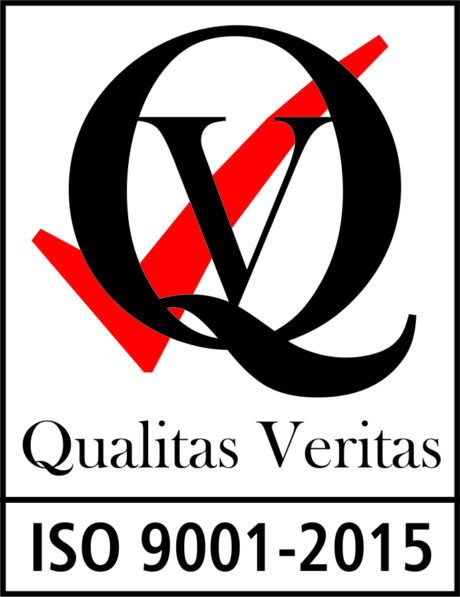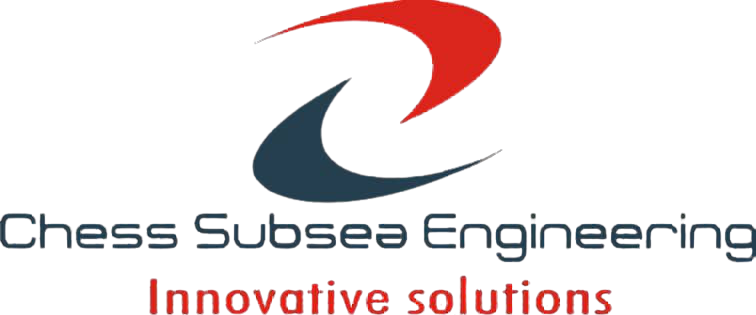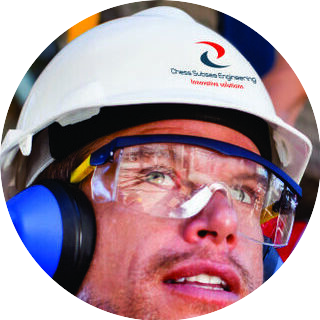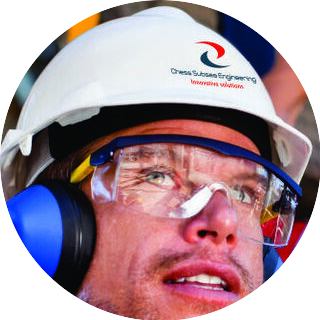-
AuthorPosts
-
November 23, 2019 at 1:58 pm #4402

LucasParticipantPlatform size depends on facilities to be installed on top side e.g. rig, living quarters, helipad etc.
Typical water depths ranges are as follows:
Less than 350 meters – Shallow Water
Less than 1500 meters – Deep water
1500 meters and above – Ultra deep water-
This reply was modified 5 years, 6 months ago by
 Lucas.
Lucas.
November 25, 2019 at 7:07 am #4422
LucasParticipantTubular Strength Comparison of Offshore Jacket Structures Under API RP2A and ISO 19902
API RP2A-LRFD and ISO 199902 codes are limit state design based approaches for design of steel jacket platforms.
API WSD is allowable strength design approach which uses a common factor of safety for material where as in API LRFD and ISO factors are constant in value for the type of resistance under considerationNovember 25, 2019 at 9:53 am #4423
KelvinKeymasterOffshore Structures Tubular Connections Engineering Design
Fatigue calculations involves several assumptions and to account for uncertainty of parameters in the calculation, suitable factor of safety (SF) shall be included as follows based on Failure Criticality, Inspectable and Not Inspectable.
Failure Critical: No Inspectable: 2 (SF) Not Inspectable: 5 (SF)
Failure Critical: Yes Inspectable: 5 (SF) Not Inspectable: 10 (SF)Note:
Primary structure joint failure of which makes the structure unstable is termed Failure Critical.
Joints within the reach of divers / ROV inspection based on specified depth is termed Inspectable
Joints that can not be inspected due to reach or to obstruction such as overlapped portion of the joint is termed Not Inspectable.November 25, 2019 at 9:55 am #4424
KelvinKeymasterOffshore Structures Tubular Connections Fatigue Life Extension Engineering Design
Fatigue life of offshore structures can be improved by any one of the following methods i.e. Profile Grinding the Weld, Weld Toe Grinding,
Hammer Peening of the Weld Toe, Smoothening Weld Caps in Butt Welds, Post Weld Heat Treatment or Adding Internal Rings.Note
Internal Ring Stiffners are commonly used method in addition to the profile grinding of the weld although it takes considerable time and cost. Similarly fatigue life improvement by post weld heat treatment is expensive as each fabrication joints needs to be heated in a controlled environment and cooled.November 25, 2019 at 10:08 am #4428
LucasParticipantOffshore Jackup Rigs Engineering Design & Analysis: Reference Codes
The following reference codes are available for use in analysis and design of jackup rigs; Society of Naval Architech & Marine Engineers (SNAME), DNV-OS-C-104 (Structural Design of Self Elevating Units), HSE – UK (Guidelines for Jackup Rigs with Particular Reference to Foundation Integrity, MSL Engineering, Report No: 289/2004) & ISO 19905-1/2012 (Site Specific Assessment of Mobile Offshore Units – Part 1: Jack-ups).
November 25, 2019 at 10:08 am #4429
LucasParticipantOffshore Jackup Rigs Engineering Design & Analysis: Analysis Of Jackups
Typical jackup analysis involves the following stages:
I. Identification of legs as simplified model as beam element with spring supports below soil and connected to the hull.
II. The hull can be modeled using plate or equivalent beam element.
III.Estimation of global environmental loads
IV. Estimation of gravity & operational loads
V. Global analysis using non-linear analysis to account for large displacements.November 25, 2019 at 3:42 pm #4435
MohammedParticipantOffshore Jackup Rigs Engineering Design for Accidental Loads : Sources of Fire
I. Hydrocarbon Direct Fire (i.e. Fuel, Ignition and Oxygen).
II. Blast Initiated Fire.
III.Collission Initiated Fire.
IV. Dropped Object Initiated Fire.
V. Select materials such that the ultimate tensile strenght is higher than the yield strenght to avoid rupture to occur at first yield eben if the
fracture toughness is high.-
This reply was modified 5 years, 6 months ago by
 Mohammed.
Mohammed.
November 25, 2019 at 3:42 pm #4436
MohammedParticipantOffshore Jackup Rigs Engineering Design for Accidental Loads : Segregation of Zones
Identify Zones of Different safety Levels
I. Process Zones: area with hydrocarbon equipment
II. Living Zones: areas where living facilities are located
III.Utility Zones: areas where utility non hydrocarbon equipment are located.-
This reply was modified 5 years, 6 months ago by
 Mohammed.
Mohammed.
November 25, 2019 at 3:42 pm #4437
MohammedParticipantOffshore Jackup Rigs Engineering Design for Accidental Loads : Design Against Fire
Design against fire requires the following information
I. Fire scenerio i.e. Types (Pool fire or Jet fire), Location, Size, Intensity & Duration
II. Heat Flow Characteristics
III.Properties of steel at elevated temperature such as mechanical and thermal properties.
IV. Properties of fire protection.-
This reply was modified 5 years, 6 months ago by
 Mohammed.
Mohammed.
November 26, 2019 at 10:57 am #4450
LucasParticipantOffshore Jackup Rigs Engineering Design & Analysis: Geotechnical Aspects
Geotechnical aspect needed to be investigated prior to mobilization and installation of jackup rigs at drill site are Hazard at site such as seabed conditions, environmental parameters etc, Evaluation of possible failure modes, Evaluation of ballast capacity to achieve the pre-load condition, Evaluation of bearing capacity for operating conditions, Effect of jackup leg penetration and its effect on the jacket piles in the vicinity, Effect of jackup leg withdrawal and loss of lateral support for the jacket piles in the vicinity and Evaluation of jacket stability during storm conditions.
November 26, 2019 at 11:02 am #4451
LucasParticipantOffshore Jackup Rigs Engineering Design for Accidental Loads: Sources Of Fire
I. Hydrocarbon Direct Fire (i.e. Fuel, Ignition and Oxygen).
II. Blast Initiated Fire.
III.Collission Initiated Fire.
IV. Dropped Object Initiated Fire.
V. Select materials such that the ultimate tensile strenght is higher than the yield strenght to avoid rupture to occur at first yield eben if the fracture toughness is high.November 27, 2019 at 1:09 am #4452
Mbonu HenryParticipantOffshore Jack-up Rigs Engineering Design with SACS Application: Design of Jack-up platform.
Optimize your design to ensure compliance and understand behavior and accurately predict performance of all types of offshore structures, fatigue analysis of offshore structure, also learn how to determine the cumulative fatigue of a structure.
November 27, 2019 at 6:11 am #4453
MohammedParticipant@Henry: Great!
-
This reply was modified 5 years, 6 months ago by
 Mohammed.
Mohammed.
December 1, 2019 at 6:49 am #4485
LucasParticipantOffshore Jackup Rigs Engineering Design for Accidental Loads: Segregation of Zones
Identify Zones of Different safety Levels
I. Process Zones: area with hydrocarbon equipment
II. Living Zones: areas where living facilities are located
III.Utility Zones: areas where utility non hydrocarbon equipment are located. -
This reply was modified 5 years, 6 months ago by
-
AuthorPosts
- You must be logged in to reply to this topic.







